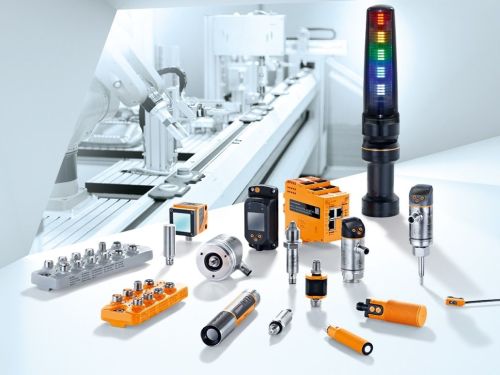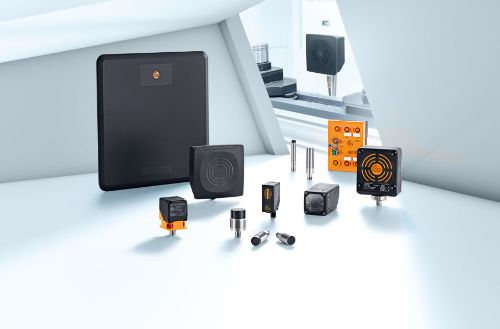Training on a smart factory model

The compact smart factory model is used for training in the development and simulation of industrial processes according to the principles of Industry 4.0.
Learning 4.0
Industry 4.0 is becoming increasingly important in the occupational field of mechatronics and automation technology. Modern training models help to teach trainees, students and teachers about the relevant technologies. With components such as those, actually used in industrial production, automation solutions of varying complexity can be developed and tested.
Nothing will remind you of the dusty training models you may have encountered during the physics lessons at school anymore. The Iserlohn-based company Köster Systemtechnik offers didactic models that use standard industrial PLCs, full graphic touch panels for display and operation, RFID technology and modern sensor technology with IO-Link data transmission. Their 3-axis gantry can be used to represent a wide variety of transport or machining situations, i.e. scenarios the trainees will also be confronted with later in their careers – albeit in a different dimension and complexity. The automation principle, however, is the same.
Peter Konegen, managing partner at Köster Systemtechnik, explains: "We build model systems for didactic purposes. The scope ranges from small compact models to large training systems on which real products can be manufactured. The model shown here is called SFM, which stands for "smart factory model". The training focus here is on Industry 4.0. This refers, for example, to technologies that allow efficient production with a “batch size of one”, enable a straightforward scaling of production and offer new ways in plant maintenance. Technologies such as data mining, connection to an ERP system or to the cloud can also be simulated with our SFM models. Ultimately, the curriculum of the respective educational institution determines how deeply these technological strategies are addressed. In any case, our SFM models are well equipped for these purposes."
What the hardware does
The centrepiece of the system is a Siemens PLC, on which trainees can load and test the application programme. Without actuators and sensors, however, a controller is pointless. The “executing component” in this model is a 3-axis gantry that is used to move a head in the X/Y/Z directions. A magnet on the head then allows to “grab” objects.
The icing on the cake is the arrangement of a touch panel. Integrated flush into the work surface, it not only serves for visualisation and operation, but also as an interactive storage surface. The position of objects placed on the touch-sensitive display can be detected and processed by the controller programme. This offers trainees creative scope, for example in the simulation of logistical processes.


Image 1: As it recognises the position of workpieces placed on it, the touch panel serves as an interactive storage surface.
Image 2: The laser distance sensor transmits distance values, which are accurate to the nearest millimetre, to the PLC via IO-Link.
Intelligent sensors with IO-Link
The smart factory model’s sensor equipment comes from the automation specialist ifm. It includes modern components that go far beyond the mere output of switching signals but offer transparency right into the sensor by means of IO-Link communication.
The O5D100 photoelectric distance sensor uses laser-based time-of-flight technology to provide distance values which are accurate to the nearest millimetre. It not only detects the presence of an object and reports it via a switching signal, it can also detect the height of an object. The measured value is transmitted digitally via the IO-Link communication protocol, which has established itself as a manufacturer-independent standard in the sensor world in recent years. And IO-Link offers even more: the parameters of sensors can be set remotely using IO-Link. Switching values can be set from the PC, but also directly via the PLC’s controller programme. They can also be changed during operation, if required. Speaking of “batch size one”, individual adjustments in the production process can be implemented easily.
IO-Link also transmits diagnostic data. The photoelectric sensor e.g. detects the presence of dirt on its lens and automatically issues a warning message if, as a result, reliable detection is no longer guaranteed. This self-monitoring function makes it possible to implement effective maintenance concepts such as real-time maintenance.
Generally, the sensors communicate via an AL1100 IO-Link master from ifm. While providing a connection for sensors and actuators via an M12 screw connection, this field module handles all communication with the PLC via Profinet protocol. In real plants, these decentralised modules offer the benefit of greatly simplified wiring. And due to the addressing of individual IO-Link sensors, wiring faults or mix-ups are ruled out when connecting or replacing devices.

The IO-Link master serves as a gateway between the sensors and the PLC, which is connected via Profinet in this case.
Identification by means of RFID
Identification solutions have become indispensable in real production processes, as they play a decisive role in product tracking or product processing. For this reason, the smart factory model is also equipped with an RFID read/write head. The DTI515 has a flat design and is mounted below the working surface. The workpieces of the model have an ID tag on their bottom side. Data can be written to it and read when the workpieces are above the RFID read/write head. Like the other sensors, the latter communicates with the master module via IO-Link.

The RFID read/write head operates with the tags on the bottom side of the workpieces. The data is transmitted to the PLC via IO-Link.
Cooperation with educational institutes
Despite its apparently rather small dimensions, the technological depth of the smart factory model is enormous. Trainees can develop and simulate countless processes on the model in a very small space. The federal state of Lower Saxony, too, has discovered this potential and equipped 23 schools with up to twelve smart factory models each.
Knowledge transfer is also of particular importance in this context. Because all models are identically equipped, learning content and projects can be exchanged via networks. This has created a real community around the “SFM”.
At some schools, several models have actually been placed right next to each other. Workpieces are moved from one platform to the next where they are then further “processed”, as is common practice in industrial production. Groups of trainees programme different processing steps for each station. This kind of co-working prepares the trainees perfectly for the demands of later working life.
Peter Konegen also perceives another advantage of the SFM: “Thanks to the connectivity, trainees were able to access the smart factory model at school remotely from their home PCs at the time of online teaching during the pandemic, allowing them to test and present their application to others. This way, practice lessons could also take place online."
Conclusion
The latest automation technology cleverly combined in the smallest space – this is how educational institutes succeed in introducing and training their trainees, students and teachers with varying degrees of technological depth to modern production development according to the principles of Industry 4.0. The automation components that the prospective technicians and engineers will find later in their jobs are also included. For both sides, this is a worthwhile investment in the future.


